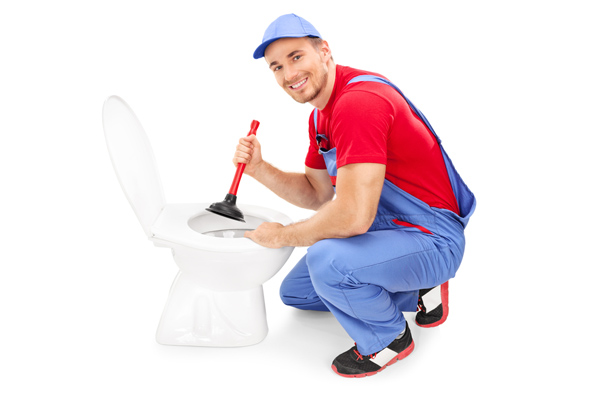Using Plungers and Drain Cleaners: Efficient Techniques
Using Plungers and Drain Cleaners: Efficient Techniques
Blog Article
We've uncovered this article involving A Guide to Plungers (and How to Use Them) directly below on the web and think it made sense to write about it with you over here.

Introduction
Proper upkeep of home drains is necessary for avoiding blockages and making sure smooth water circulation. Among the secret devices in every property owner's toolkit is the plunger, together with numerous drain cleansers developed to take on stubborn blockages effectively. This post discovers how to use plungers and drainpipe cleansers properly to maintain your drains flowing openly.
Area 1: Understanding Plungers
Types of Plungers
There are several sorts of plungers available, each created for various types of drains pipes and clogs. The most usual kinds consist of mug bettors, flange bettors, and accordion plungers.
How Plungers Work
Plungers work with the concept of creating stress and suction to dislodge obstructions. When effectively used over a drain, they create a vacuum cleaner that can pull out debris or separate clogs.
Choosing the Right Bettor
Choosing the right plunger relies on the kind of drain and the nature of the clog. Cup bettors are optimal for sinks and bathtubs, while flange plungers are much better suited for bathrooms as a result of their design.
Typical Blunders with Plungers
Staying clear of these errors ensures reliable plunging: inappropriate seal around the drain, insufficient pressure, and not clearing surrounding particles.
Section 2: Utilizing Plungers Effectively
Prep work
Before diving, guarantee the bettor covers the drainpipe entirely and forms a limited seal. Clear any visible particles around the drain opening.
Technique
Beginning with gentle plunging motions to develop suction. Increase stress gradually, using a constant rhythm. Repeat as needed until the drainpipe clears.
Repairing Tips
If plunging doesn't function, try readjusting the seal, applying oil jelly for a far better seal, or utilizing a various type of plunger.
Section 3: Recognizing Drain Cleaning Company
Sorts Of Drainpipe Cleansers
Drain cleansers can be chemical or chemical. Chemical cleansers use strong chemicals to dissolve obstructions, while enzymatic cleansers use all-natural enzymes to break down organic matter.
Just How Drain Cleaning Company Job
Chemical cleaners react with blockages to liquify them, while enzymatic cleansers break down natural materials like hair and oil without hurting pipelines.
Security Factors to consider
Always put on gloves and eye protection when making use of chemical drainpipe cleaners. Make sure appropriate air flow and follow maker guidelines meticulously.
Eco-Friendly Alternatives
Think about making use of vinegar and baking soda or enzyme-based cleaners for environmentally friendly choices that are more secure for pipelines and the environment.
Section 4: Making Use Of Drainpipe Cleaners Properly
Application Strategies
Pour chemical cleaners directly right into the drain opening. Allow them to help the recommended time before flushing with hot water. Enzymatic cleansers ought to rest overnight.
Precautions
Prevent blending different sorts of cleansers, as this can produce hazardous fumes. Never use chemical cleansers combined with a plunger, as splashing can take place.
Handling Stubborn Blockages
For consistent obstructions, consider using a pipes snake or calling a professional plumber to prevent damage to pipelines.
Verdict
In conclusion, recognizing how to utilize bettors and drain cleaners properly is important for preserving healthy and balanced pipes systems. By choosing the right tools and techniques, homeowners can tackle small blockages and protect against significant plumbing issues down the line.
How To Properly Use A Plumbing Snake To Clear Drains
When any drain clogs in our home arise, we tend to gravitate toward the plunger and little else. In cases where the plunger and its vacuum-created pressure are not able to clear clogs, many immediately move to harmful chemicals or simply call their plumber to fix the issue.
we’re happy to help with all drain cleaning needs and concerns. This includes informing you on a few other home remedies you may have at your disposal for minor to moderate clogs, one of which is the use of a plumbing snake. Many people have never used one of these before – let’s go over the steps to take when your drain clogs and you have a plumbing snake available.
Attempt Plunger Use
The first step here, as we noted above, should indeed be to grab your plunger when you notice a drain clog and attempt to resolve it this way. If you’re unsure how to use a particular type of plunger, our plumbers can answer any questions you have. If this doesn’t do the trick, however, you move on to the snake.
Locate And Prepare Snake
A plumbing snake is a metal or plastic device that’s generally about a quarter of an inch thick. It’s design with significant extensions, meant to reach down into your clogged drain and push the clog out. Snakes also contain drain augers that will latch onto and push stubborn blockages.
If your plunger doesn’t clear a clog, locate your snake and bring it to the drain in question. We also recommend keeping a bucket nearby to collect the clog once you pull it out, plus we’d advise wearing goggles and possibly protective gloves.
Feed Snake
Once you’re ready to go, feed the snake slowly down the drain, using the crank device it comes with to keep it moving until it finds the clog. Once this happens, much of the clog will be latched onto the coil so you can pull it out, while the rest will simply break up and flow downward.
Detach Debris
Remove the snake slowly from the drain, and once you’ve done so, pick off any debris that’s stuck to the coil. This is another area where wearing gloves is a must.
Flush Drain
Finally, take a few minutes to ensure the snake has done its job correctly. If you’ve been using it on a toilet, flush the toilet a couple times and make sure everything flows well. If you’ve used it on a different drain, flush it with some room temperature water.
https://www.mybuddytheplumber.com/blog/how-to-properly-use-a-plumbing-snake-to-clear-drains/

Application Strategies
Pour chemical cleaners directly right into the drain opening. Allow them to help the recommended time before flushing with hot water. Enzymatic cleansers ought to rest overnight.
Precautions
Prevent blending different sorts of cleansers, as this can produce hazardous fumes. Never use chemical cleansers combined with a plunger, as splashing can take place.
Handling Stubborn Blockages
For consistent obstructions, consider using a pipes snake or calling a professional plumber to prevent damage to pipelines.
Verdict
In conclusion, recognizing how to utilize bettors and drain cleaners properly is important for preserving healthy and balanced pipes systems. By choosing the right tools and techniques, homeowners can tackle small blockages and protect against significant plumbing issues down the line.
How To Properly Use A Plumbing Snake To Clear Drains
When any drain clogs in our home arise, we tend to gravitate toward the plunger and little else. In cases where the plunger and its vacuum-created pressure are not able to clear clogs, many immediately move to harmful chemicals or simply call their plumber to fix the issue.
we’re happy to help with all drain cleaning needs and concerns. This includes informing you on a few other home remedies you may have at your disposal for minor to moderate clogs, one of which is the use of a plumbing snake. Many people have never used one of these before – let’s go over the steps to take when your drain clogs and you have a plumbing snake available.
Attempt Plunger Use
The first step here, as we noted above, should indeed be to grab your plunger when you notice a drain clog and attempt to resolve it this way. If you’re unsure how to use a particular type of plunger, our plumbers can answer any questions you have. If this doesn’t do the trick, however, you move on to the snake.
Locate And Prepare Snake
A plumbing snake is a metal or plastic device that’s generally about a quarter of an inch thick. It’s design with significant extensions, meant to reach down into your clogged drain and push the clog out. Snakes also contain drain augers that will latch onto and push stubborn blockages.
If your plunger doesn’t clear a clog, locate your snake and bring it to the drain in question. We also recommend keeping a bucket nearby to collect the clog once you pull it out, plus we’d advise wearing goggles and possibly protective gloves.
Feed Snake
Once you’re ready to go, feed the snake slowly down the drain, using the crank device it comes with to keep it moving until it finds the clog. Once this happens, much of the clog will be latched onto the coil so you can pull it out, while the rest will simply break up and flow downward.
Detach Debris
Remove the snake slowly from the drain, and once you’ve done so, pick off any debris that’s stuck to the coil. This is another area where wearing gloves is a must.
Flush Drain
Finally, take a few minutes to ensure the snake has done its job correctly. If you’ve been using it on a toilet, flush the toilet a couple times and make sure everything flows well. If you’ve used it on a different drain, flush it with some room temperature water.
https://www.mybuddytheplumber.com/blog/how-to-properly-use-a-plumbing-snake-to-clear-drains/

I found that page on How to Use a Plunger to Unclog a Toilet or Drain while browsing on the web. Be sure to take a moment to promote this content if you enjoyed it. Thanks for taking the time to read it.
Pricing Report this page